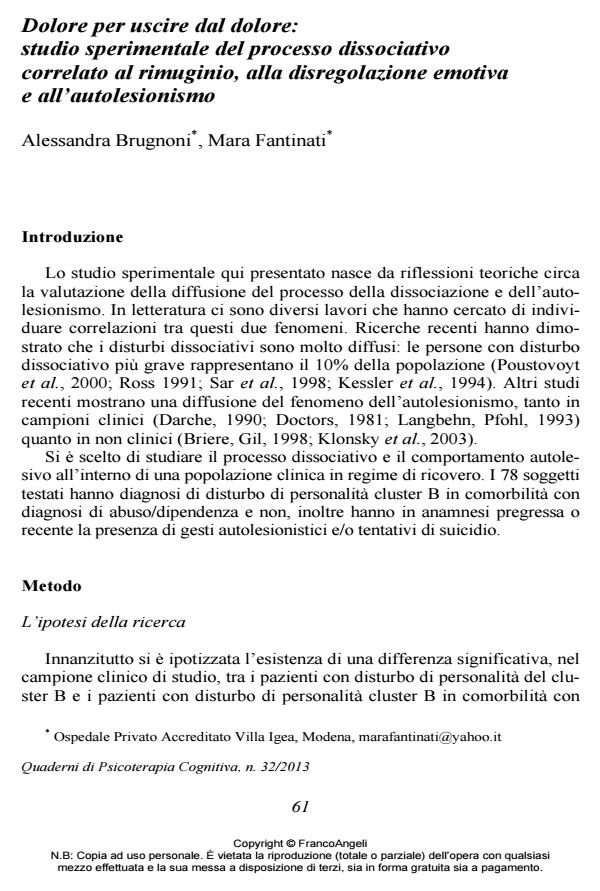Pain to overcome the pain: Experimental study of dissociative process related to the brooding, the emotional dysregulation and self-harm
Journal title QUADERNI DI PSICOTERAPIA COGNITIVA
Author/s Alessandra Brugnoni, Mara Fantinati
Publishing Year 2013 Issue 2013/32
Language Italian Pages 17 P. 61-77 File size 680 KB
DOI 10.3280/QPC2013-032005
DOI is like a bar code for intellectual property: to have more infomation
click here
Below, you can see the article first page
If you want to buy this article in PDF format, you can do it, following the instructions to buy download credits

FrancoAngeli is member of Publishers International Linking Association, Inc (PILA), a not-for-profit association which run the CrossRef service enabling links to and from online scholarly content.
The aim of the study was to investigate the dissociative process in a clinical sample of 78 patients suffering from cluster B personality disorders with or without substance abuse. The literature has defined the self-harm both as strategy of emotional avoidance (Chapman, Gratz, Brown, 2006) both as action termination of a dissociative state consequent to a state of analgesia (Matsumoto, Imamura, Chiba, 2008). Today the term dissociation can be referred to at the same time a defense mechanism, an altered state of consciousness, or the failure to capture or loss of integration between systems or mental modules (Van der Hart, Nijenhuis, Steele, 2006). Therefore it was decided to analyze the dissociative process related to the brooding, the emozional dysregulation and self-harm. The correlational statistical analysis and multiple linear regression data revealed significant and useful results for therapeutic intervention.
Keywords: Dissociation, self-harm, cluster B Personality Disorders
Alessandra Brugnoni, Mara Fantinati, Dolore per uscire dal dolore: studio sperimentale del processo dissociativo correlato al rimuginio, alla disregolazione emotiva e ll’autolesionismo in "QUADERNI DI PSICOTERAPIA COGNITIVA" 32/2013, pp 61-77, DOI: 10.3280/QPC2013-032005